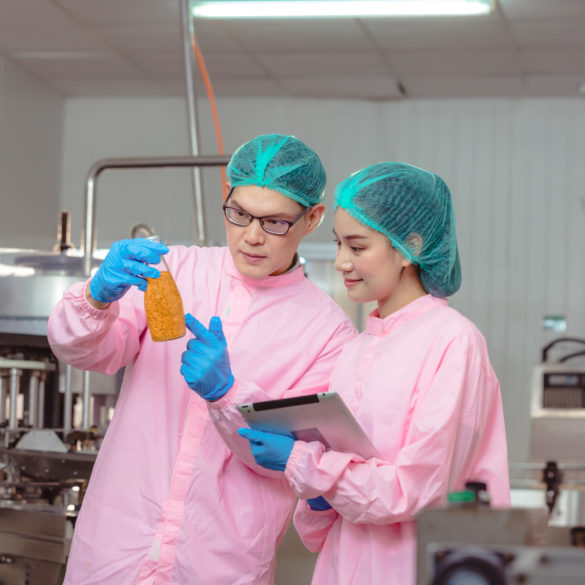Food Safety and Sanitation Online – Integrated Pest Management
9.5 Hours – Learn how to use Integrated Pest Management and food defense basics to troubleshoot pest problems.
View Online Training

Keeping your facility’s managers and supervisors informed on the latest food safety requirements remains a challenge across the food industry.
Support the development and management of the critical food plant programs that allow you to produce safe, legal food products and meet your customers’ food safety expectations. This course is available in 2 training packages (Full Course and IPM) or you can choose the Food Safety and Sanitation Online modules that are right for your team.
Click the drop downs below to learn more about the available modules. Once you’ve made your decision, click “View Options” above to add the module to your cart.
Ensure your team has the tools they need to meet US regulatory requirements with these modules.
50 minutes
110 minutes
60 minutes
40 minutes
Frontline workers are responsible for safeguarding some of the most critical food safety programs. Make sure your team understands their role in these programs with these modules.
60 minutes
30 minutes
80 minutes
45 minutes
There is a lot that goes into keeping a plant clean and pest free. These modules will walk you through important plant sanitation, microbial and IPM practices.
75 minutes
120 minutes
40 minutes
40 minutes
50 minutes
Keeping track of where products have been and where they are going is critical to minimizing the risk of recalls. Determine if your facility is following best practices for preventing and managing the possibility of a recall with these modules.
50 minutes
50 minutes
50 minutes
Broken equipment and improperly-designed facilities means more down time for your plant. Keep your lines running with these modules.
60 minutes
80 minutes
35 minutes
75 minutes
Your QA team upholds your company’s high standards. These modules give them the best practices they need to meet your customer’s food safety and quality expectations.
40 minutes
60 minutes
70 minutes
80 minutes



Food Safety & Sanitation Online – Build Your Own!
Build your team’s Food Safety and Sanitation Online training! Pick and choose the modules that are right for your team.
Keep your team’s training organized with a multi-user license! When you purchase a multi-user license for one of the three training packages, you can assign the course to multiple team members and track their progress in our easy to use online portal.